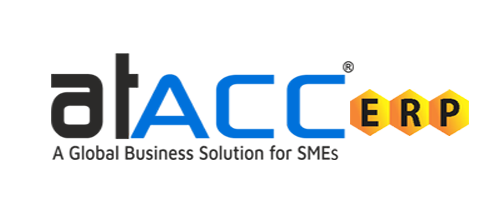
When There Is Collaboration And Team Work, Wonderful Things Can Be Achieved.
Two decades of hard work and research have enabled us develop and launch a prestigious international software package called atACC ERP, which has been globally accepted, for easing the day-to-day business operations of different kinds of business segments like retail and wholesale traders, manufacturers, restaurants, mobile or computer shops, construction companies, hotels, service centres etc. Started in 2002 in Kerala, India we have been able to launch our international office in Dubai, UAE recently.
Though mainly in product development, we are also in project development (services) and we have expertise in .Net and Android applications. atACC ERP can be used in many other segments customising it at a minimum level to fit cent percentage for those companies.
Services
We offer a different array of services to meet any of your web, windows, mobile requirements.
Software Development
We have a state-of-the-art software development division with competent software professionals ..
Product Development and Research
Under this division we take care of development of software packages to the global market.
Project Development (Services)
Under this division we take care of development of turn-key projects and we have executed various projects for the global customers during the last few years.
Our Software Products
Transform Your Business With Innovation And Artistry For Substantial Growth And Development
atACC ERP 19
Our brand new product atACC ERP 19 has been developed using the latest technologies. Software has incorporated a very futuristic web based Read More
Appsuite Mobile App
Provision for Sales Invoice, Sales Order, and Cash Receipt, along with Ledger Report, Sales Register, Stock List, and a Dashboard for Management—now available through AppSuite on Android Mobile. Read More
atACC PDT App
We have newly developed PDT mobile app which contains price checker and stock taker will be useful in supermarkets hypermarkets etc Read More
Best Fit For
Unlocking Efficiency: Your Perfect Fit with atACC ERP

SMEs of any segment

Retail and wholesale

Distributors

Manufacturers

Textiles

Import/Exporters

Construction Companies

Mobile/Computer Shops

Service centers

Pharmacy

Hotels

Hypermarkets
Request Demo
Our team will be available for giving you a free demo of our atACC ERP, Which will help you to find the ideal solutions for your business.
Customer Testimonials
We have more to say, but now let our customers do the talking!
Contact
Providing you the satisfactory support and ready assistance that you deserve is our priority.
Our Address
Atlanta IT Solutions Pvt Ltd, Malappuram, Kerala, India
Email Us
Call Us
+91 483 2739103,04







